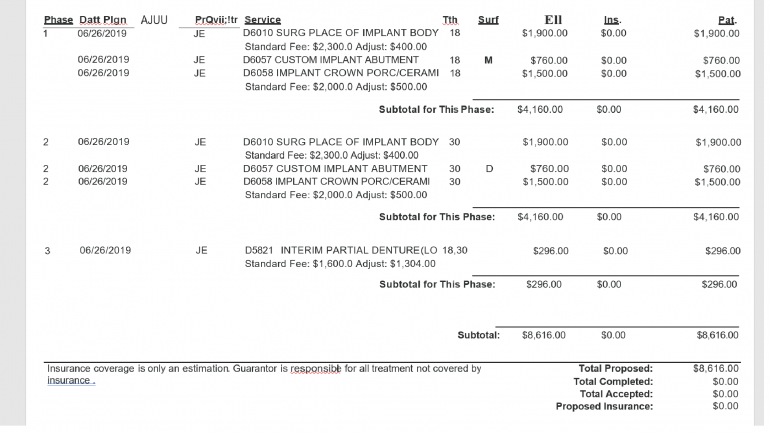
Dental Code D7288: Brush biopsy - transepithelial sample collection
Dental Code D7288 refers to a specific dental procedure known as brush biopsy for transepithelial sample collection. Patients need comprehensive information about this procedure, including its purpose, steps involved, and its significance in dental diagnostics. By understanding the details of this dental code, patients and dental professionals can gain insights into its application and potential benefits.
What Does Dental Code D7288 mean? Detailed Information about the Procedure and Steps
Dental Code D7288, brush biopsy for transepithelial sample collection, is a procedure employed in dentistry to obtain tissue samples from the oral cavity for diagnostic purposes. This code specifically denotes the use of a brush-like instrument to collect samples from the surface of the oral epithelium.
Patient Preparation and Anesthesia
Before the brush biopsy procedure, the dental professional ensures that the patient is comfortable and adequately prepared. Patient comfort is important to minimize any potential anxiety or discomfort during the procedure. The dental professional may explain the procedure to the patient, addressing any concerns and obtaining informed consent. If necessary, a local anesthesia may be administered to numb the area where the biopsy will take place. This helps to ensure a painless experience for the patient.
Selection and Preparation of the Brush Biopsy Instrument
The dental professional carefully selects a suitable brush biopsy instrument designed for transepithelial sample collection. The brush is typically composed of soft bristles attached to a handle. It is essential to use a clean and sterile brush biopsy instrument to prevent any contamination and ensure accurate test results. Proper sterilization techniques are employed to maintain the instrument's cleanliness.
Sample Collection
Using the brush biopsy instrument, the dental professional gently rubs the bristles against the targeted area of the oral epithelium. The targeted area is usually an abnormal lesion, ulcer, or suspicious tissue that requires further evaluation. The brush is moved in a circular or back-and-forth motion to collect cells from the surface of the tissue. This process allows for the collection of superficial layers of cells without the need for an invasive procedure like a scalpel biopsy. The brush biopsy technique is relatively painless and minimally invasive.
Preservation and Processing of the Sample
Once the sample has been collected, it is carefully preserved and prepared for further analysis. The collected cells are typically transferred to a specialized container that ensures their integrity during transportation to the laboratory. Proper handling and storage are crucial to maintaining the viability and quality of the sample. The container may contain a preservative solution that helps to preserve the cellular structure and prevent degradation. It is essential to label the container accurately with patient information to ensure proper identification.
Laboratory Analysis and Diagnosis
The preserved sample is sent to a laboratory where it undergoes detailed analysis. Highly trained professionals, such as pathologists or cytologists, examine the collected cells under a microscope. They assess the cellular morphology, look for any abnormal changes, and provide a diagnosis based on their findings. The results of the brush biopsy help in determining the presence of oral lesions, potential malignancies, or other oral health conditions. The laboratory report provides valuable information to the dental professional, aiding in treatment planning and determining the appropriate course of action.
Significance of Brush Biopsy for Transepithelial Sample Collection
Brush biopsy for transepithelial sample collection offers several advantages in dental diagnostics. Firstly, it is a minimally invasive procedure, which means it is less uncomfortable for the patient compared to other biopsy techniques. The non-invasive nature of brush biopsy reduces the risk of bleeding and infection. It also eliminates the need for sutures and promotes faster healing.
Furthermore, brush biopsy allows for the sampling of superficial cells from the oral epithelium, providing valuable information about the surface layers of tissue. This technique is particularly useful in detecting early signs of dysplasia, oral cancer, and other precancerous or malignant conditions. Early detection through brush biopsy increases the chances of successful treatment and improved patient outcomes.
In addition, brush biopsy is a relatively quick procedure that can be performed in the dental office without the need for a separate hospital visit. The convenience and efficiency of brush biopsy make it a practical diagnostic tool in routine dental practice.
Summary of Dental Code D7288
Dental Code D7288, which involves brush biopsy for transepithelial sample collection, is a valuable diagnostic tool used in dentistry. This procedure allows for the non-invasive collection of oral tissue samples, which are subsequently analyzed in the laboratory for diagnosis. By providing a detailed understanding of the steps involved in this procedure, patients and dental professionals can appreciate its significance in detecting and managing various oral health conditions. The brush biopsy technique contributes to early detection, enabling prompt intervention and improving patient outcomes.
Dr. BestPrice – where affordability meets excellence in dental care. It's time to shine! Visit Dr. BestPrice today and experience the perfect blend of exceptional dental care and affordability. It's time to shine with a healthy and radiant smile. Compare prices and take the first step towards optimal oral health.
